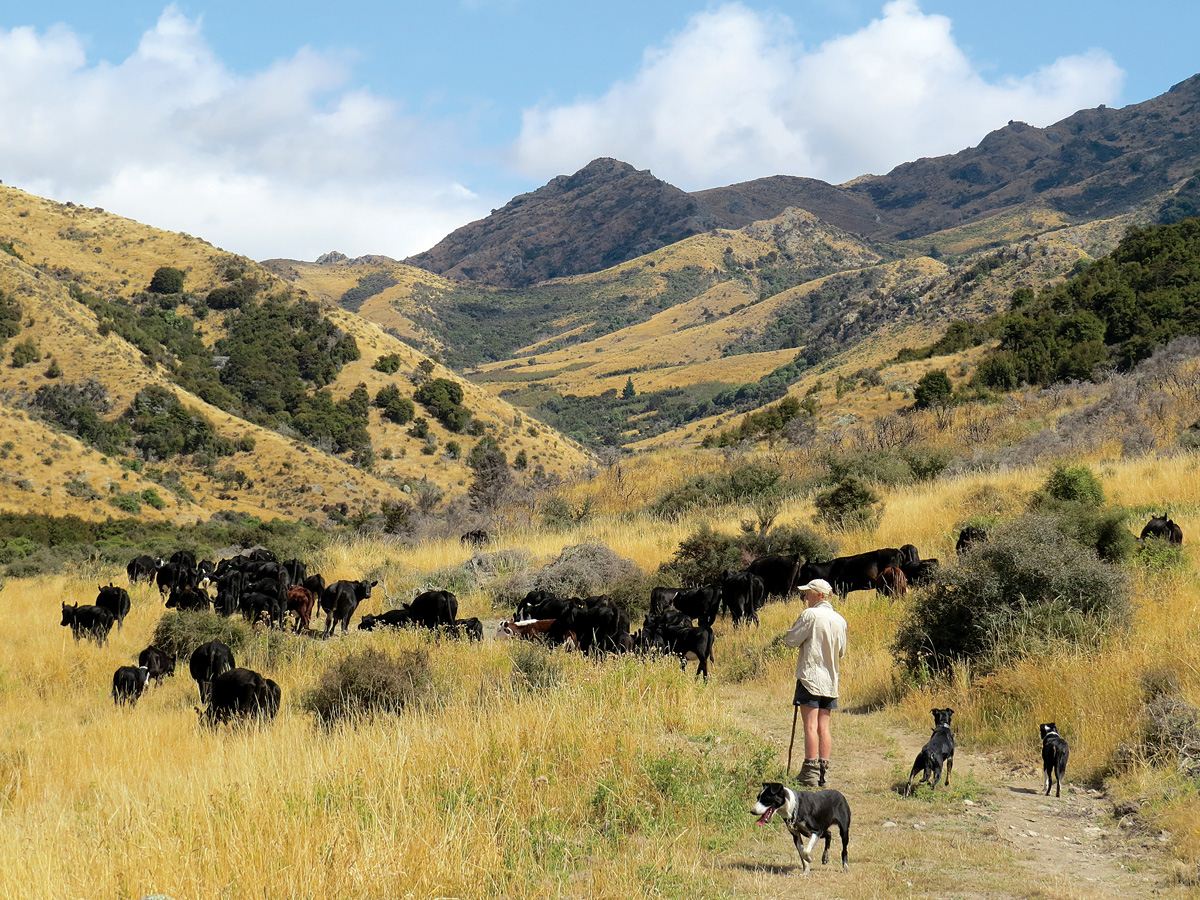He Waka Eke Noa - we are all in this canoe together


Chris Valli
With the world at a tipping point when it comes to irrevocable climate change, Marlborough farmers Joanna and David Grigg are building climate change into their plans.
It will take a community. That’s the message Joanna Grigg is keen to share as she contemplates combatting climate change at a local level.
Talking from her hill-country home on Tempello Station, nestled in the dry hills of the ranges between Wairau and Awatere Valleys, Joanna is responding to the recent Intergovernmental Panel Climate Change (IPCC) report.
Accepting the urgency of the latest findings is key, she says as scientists voice their concerns about climate change thresholds. Once crossed, there is no way back.
The report underlies the urgency of taking global action to halt climate change.
It warns that without immediate, rapid and large-scale reductions in greenhouse gas emissions, it will be impossible to limit warming close to 1.5°C or even 2°C.
From a Marlborough perspective, Joanna firmly believes the whole community needs to get involved with this. Everyone has a responsibility, she says.
“As a farmer I think about climate each day, and I accept the science and message of urgency in the IPCC report. It says Earth’s climate has always changed naturally, but both the global extent and rate of recent warming are unusual. The recent warming has reversed a slow, long-term cooling trend.”
For Joanna and the Tempello farm - a family business for 104 years – making and nurturing a sustainable business practice and model is key for the 4400-hectare property, growing sheepmeat, wool, beef, grapes and sequestering carbon.
The farm also features a1600-hectare indigenous forest, the largest remaining dryland forest in the Wither Hills Zone.
Joanna says she has concerns that some of the data from the report is misleading.
“I was interested to read that the IPACC Report states measuring methane emissions the same way as carbon (known as the GWP100 method) which is inaccurate.
“Methane in New Zealand may be around 40 per cent of annual emissions, but it has not been 40 percent of warming each year for quite some time.
“Carbon and methane should be treated differently,” she says.
The 2021 NIWA report on what Marlborough’s climate might be like by 2100 shows fewer frosts but also a greater intensity of extreme events like heat waves, and drought.
Joanna is realistic about carbon emission options and believes she know what will work.
“Some farmers may drop stocking rates to do it but our farm stocking rates are already low, at five stock units per hectare, and matched to the environment.
“We can’t grow vegetables or grapevines on steep hills. I firmly believe the profitability of food production and access to food must be maintained. This has to be key within any plan to penalise emitters.”
The Brancott Rd farm can afford to pay some level of climate levy for methane per animal sold, but according to Joanna, if agriculture went into the Emissions Trading Scheme (ETS) tomorrow at the current price of $50/tonne carbon, it would make their farm largely insolvent overnight.
Emitters can purchase credits to offset their emissions. This provides an incentive for people to reduce emissions and plant forests to absorb carbon dioxide.
“We know from using Overseer, that for our farm of around 800 cattle and 3500 sheep, we produce 4000 tonnes of carbon equivalent emissions/year.
“To buy offsets it would cost $200,000/year. We can’t even use our 1600 hectares of kanuka/beech forest to offset as it was established before 1990 (in fact it was there pre-people in NZ!) so it’s excluded in the rules.”
Joanna freely admits that she stays awake at night worrying about the future.
“Cradle to grave figures of kg of CO2-e per kilogram of animal, show NZ beef is the third best (lowest emitter) in the world.
‘It’s free-range nutrient-rich protein and fabulous. Eighty eight percent of NZ beef and almost 95 percent of lamb and mutton grown is exported.
“I don’t believe being the first to bring agriculture into the Emissions Trading Scheme, to try and get market premiums, is a good enough reason either. It should be about cutting emissions globally.”
She adds they don’t get premiums for sheepmeat, beef, wool or grapes within their business, even though they have a rare dryland indigenous Permanent Forest Sink of 230 hectares, which is regenerating and listed in the ETS.
“We get no more money for our other products, and it earns less per hectare than a pine forest in the ETS. It only offsets 700 tonnes a year while Pinus radiata on the same area would offset about 3500 tonnes/year.”
In November this year, the He Waka Eka Noa Climate group comes out with recommendations on a pricing system for agriculture in the ETS. This is planned to be set for farms by 2025.
Chief Executive Dairy New Zealand Tim Mackle says the He Waka Eke Noa initiative (we are all in this canoe together) was a credible five-year plan which includes clear and measurable actions, outcomes and timeframes.
Joanna believes carbon sequestering is a practical and realistic solution.
“My view is that a lot could be solved if the carbon sequestering net was allowed to go wider over a farm, taking in more regenerating areas of indigenous vegetation.
“Current ETS rules, managed by the Ministry for Primary Industries, exclude so much regenerating forest and amenity plantings on farms. We’ve tried three times to include more.”
Sustainable practice such as scattering kanuka trees for grazing for shade was a viable option for the Grigg family farm. However, the ETS mapping rules (forest land must be mapped into carbon accounting areas) has caused frustration.
“We have scattered kanuka trees across much of our grazing land, for shade and on steep areas where the scrub rake couldn’t reach in the 1980s. But the ETS mapping rules consider the scattered kanuka joined together to count as a forest in 1990 – so it’s exempt from being eligible to offset our emissions.
“We would have been better off pulling out every last tree in the 1980s but this is not our way of treating our land. Now we are prepared to retire some of it for carbon and we can’t.”
A proactive solution, according to Joanna, would include regenerating indigenous forest into farmers’ emissions calculator. It would, she says be a game changer.
The mix of sheep and cattle on dryland Marlborough is so well suited to the environment, she says.
“Angus cows are the ultimate for steep hills – they control pasture and turn this potential fire-risk into beef, they groom pastures for sheep and remove the parasite larvae meaning we don’t need to drench ewes.
“It is sustainable and earns export dollars. Farmers control weeds. Our nassella tussock, gorse and broom costs around $100,000 a year to control. Who would pay for that if a profitable farm was gone – urban people’s rates?
So where to from here, August 2021? The Government is currently working on an Emissions Reduction Plan, drawing on advice from the New Zealand Climate Change Commissions insights and findings.
Joanna is confident they will continue to work through the IPCC report and use the latest science and information to be the advocates for the whole community and not just for rural people.
She adds mitigating emissions and adapting to a changing climate is about continuing to ‘provide advice, support and research’ so ultimately everyone is accountable for their own backyard and the ‘global village’.
He Waka Eke Noa - we are all in this canoe together!
